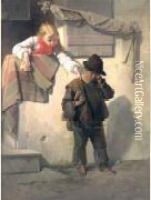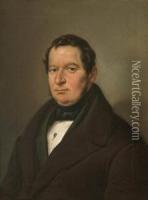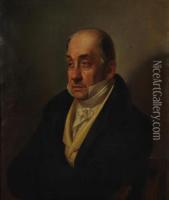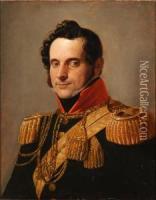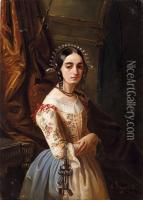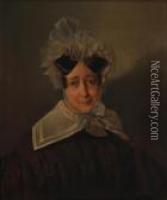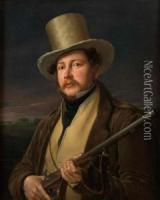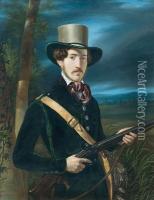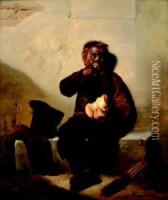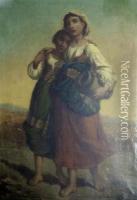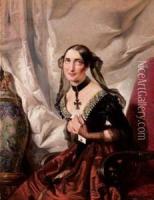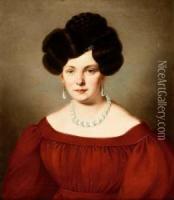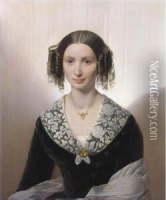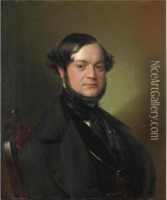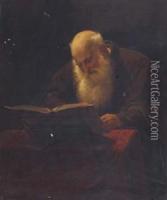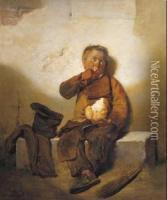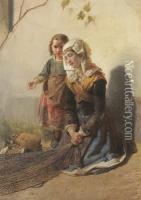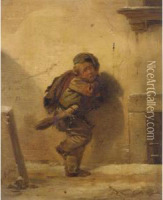Giuseppe Molteni Paintings
Giuseppe Molteni was an influential Italian painter born on October 24, 1800, in Milan. He initially trained at the Brera Academy under the Neoclassical painter Luigi Sabatelli. Molteni started his career as a history painter, but he eventually became best known for his portrait work and religious paintings.
In the 1820s, Molteni began to gain recognition for his historical and biblical scenes, which were in line with the popular Romantic movement of the time. However, by the 1830s, he shifted his focus to portraiture, finding greater success and patronage. His portraits were known for their psychological depth and the realistic representation of his subjects. Molteni's skillful use of chiaroscuro and his attention to textural details in fabrics and jewelry contributed to the life-like quality of his portraits.
Molteni's work as a portraitist caught the attention of the Austrian rulers who controlled Lombardy, and he became a favored artist among the Habsburg elite. He painted portraits of several members of the Austrian nobility, which helped to solidify his reputation. Aside from his commissioned work, Molteni was also a passionate collector of Old Master paintings, and he played a significant role in the preservation and restoration of artworks.
Throughout his career, Molteni was involved in various artistic circles and was a member of several arts organizations, including the Brera Academy. His influence extended beyond his own painting as he mentored younger artists and was involved in the Milanese artistic community.
Giuseppe Molteni never ceased to innovate and experiment with new techniques and materials. His dedication to the arts and his impact on the Milanese art scene lasted until his death on November 14, 1867. Molteni's legacy continued through his students and the many portraits that capture the spirit of Italian society during his lifetime.
